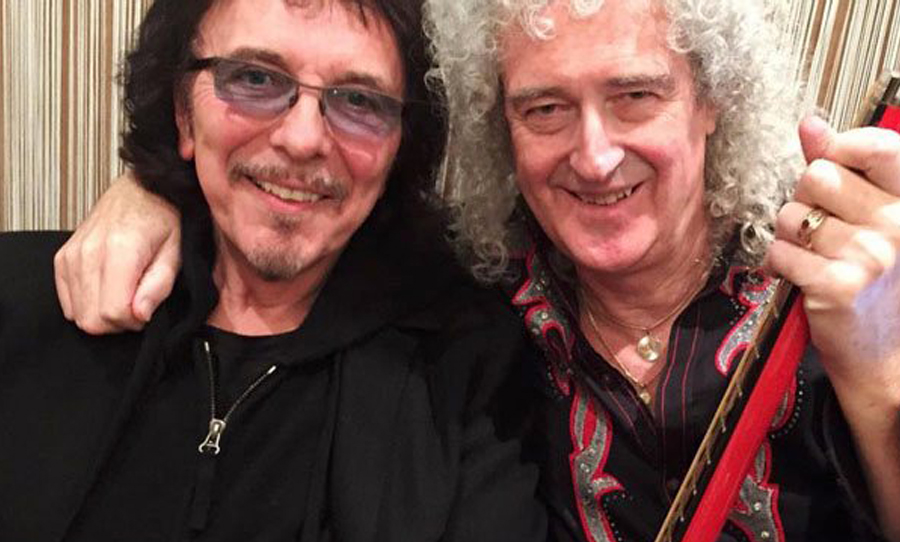We had a chat with the loudest band in Sydney, Zeahorse, about their massive sound, vintage amps and their approach to recording.
Zeahorse is a force to be reckoned with. If you’ve ever seen the Sydney four-piece live, you’ll know how much impact they have: pummelling baritone guitars, cavernous vocals, and a ruthless rhythm section creates a sonic barrage so fierce it leaves you both euphoric and considerably rattled.
If you haven’t seen them live, you’re missing out. We caught up with singer/guitarist Morgan Anthony to find out more about their massive sound.

ENMORE AUDIO: Tell me a bit about how you guys record. Do you prefer working in studios, or is it a more DIY approach?
ZEAHORSE: Definitely studio. Hats off to all the DIY heads out there, I have the ultimate respect for you all. But for us, we’re most comfortable in a studio environment. We’re pretty hands-on in terms of working with our engineers. The previous 2 records were recorded with our good friend Steve Law, this next record we’re doing with another very close friend, Dan Frizza. He’s been a long friend of the band and he’s got a great open approach to recording which is why we work well together.
We’re also recording over a longer period of time (much than the last 2 records which were done in a week). This more drawn it approach is really enjoyable, more time to think things through with tones and drum sounds etc.
ENMORE AUDIO: I really liked the way you guys recorded the drums on that track – there’s this Beastie Boys kinda vibe. Was this a new approach for Zeahorse?
ZEAHORSE: It’s so good to hear that comparison cause I love the Beastie Boys. There’s so much character in their music! So yeah, with 20 Nothing we kinda had no choice but to record the drums in a big open warehouse. Credit to Friz for pulling out the drum sound, it was pretty wild and undefined, through quite a lot of work he sculpted a super unique tone that still manages to cut through the barrage of guitars.
The best thing about our approach to this record is that there are no rules, it’s in that freedom where cool and unique sounds are created.
ENMORE AUDIO: I’ve heard you guys use some vintage amps – what are you running?
ZEAHORSE: For live shows, Max and I both play through heads and quad boxes. Benny (bass) uses a relatively new Orange 200, Max (baritone) runs a JCM 2000 and I run a vintage Ampeg vt-22 that was pulled out of one those old combos and built into a head chassis. I looked for that amp for four years and finally it appeared on Gumtree and it was in Sydney so it was meant to be. It’s super clean and very loud which helps with getting the most out my overdrive and fuzz pedals.
I rarely service it because back in the day Ampeg made indestructible gig horses. I’ve dropped it, spilt beer all in it and abused it for five years and it still sounds like the day I bought it, either that or I’m deaf. I’m probably deaf.
ENMORE AUDIO: I love your use of discordance and grinding chords. Is there a certain way you guys approach writing guitar parts? Do you use any weird tunings?
ZEAHORSE: The discordance I think comes from the blend of baritone, guitar and bass. We do play in irregular tunings, especially the baritone so I think that combined with different overdrives creates an angular mix of tones.
ENMORE AUDIO: Who are some guitar heroes for Zeahorse?
ZEAHORSE: Neil Young, Mate Pike, Rowland S Howard, Kevin Sheilds.
Fuzz, distortion and delay/verb is such a big part of your sound – tell us a bit about your rigs.
Here’s a simplified rundown of our live rigs:
Max: Hotcake, ProCo 2 Rat, Diamond Delay.
Morgan: OCD, Russian Big Mud by Tym’s Guitars, Boss DD 6.
Benny: Assmaster.
When we record we use anything and everything we can get our hands on.
ENMORE AUDIO: I really like how you switch between dryness and spaciness with your vocals. Is there anything you gravitate towards for processing vocals in the studio? How do you approach this live?
ZEAHORSE: Usually, we set out with two mic setups, but with the new record, there’s three to four different vocal sounds going on.
We then pick a solid take usually the driest and then sculpt the other takes around it. Then with the different parts of the song we bring different takes. I like creating a bunch of different textures with vocal takes/effects to build a landscape.
The Roland Tape Echo has always been a part of tracking in the studio and live I use a TC Helicon Mic Mechanic.
ENMORE AUDIO: What’s next for Zeahorse? Is 20 Nothing the first single off a new record? What can expect from new material?
ZEAHORSE: Yep, the new album is well underway. There will be another single dropping soon and in terms of what it sounds like we’re not reinventing ourselves, just refining.



